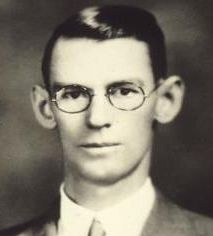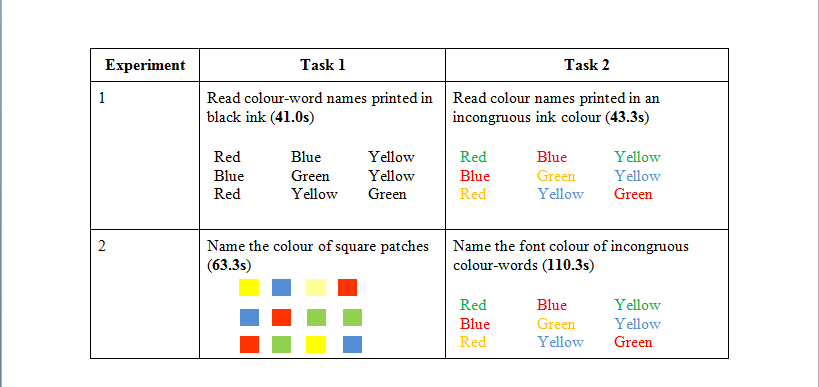In a landmark experiment in 1935, John Ridley Stroop demonstrated a cognitive effect which has fascinated psychologists for centuries. In the first of a series of experiments reported in his dissertation, Stroop asked participants to read the names of a list of colour words (e.g. blue, red, etc) under two conditions. In the first condition, participants were asked to read words that were printed in black ink whereas in the other condition they were expected to read words which were printed in ink colours that did not match the color names. For example, the word blue may have been printed in red ink (i.e. blue – in this case, the correct answer would have been blue). In this experiment, Stroop found that there was no significant difference in performance between the two conditions.
In the second experiment, Stroop modified the task. This time, participants were asked to name colours instead of read words. In one condition, participants named the colour of square patches of colour. In the other condition, they were given a list of words printed in incongruent colours (as in the first experiment) but were now asked to name the colour of the ink in which each word was printed. For example, if the word yellow was printed in green ink, the correct answer would have been green. Sounds simple enough, right? Not quite! The difference in performance between the two conditions was striking: when asked to name the colour of the square patches, participants had very little difficulty but when asked to name the colour of the ink and ignore the word, their response time increased dramatically, as did the number of errors they made. Participants fumbled through the list, finding it hard not to read the words instead of naming the colours. This difficulty in selectively attending to the colour of the ink while ignoring the printed word has come to be known as the Stroop effect.
The average time taken to complete the tasks, according to Goodwin (2010), is indicated in brackets in Table 1 above. As you can see, the average amount of time it took participants to name the font colour of non-matching colour words (110.3s) was more than twice the amount of time it took for them to read the words printed in non-matching colours (43.3s). Why not try the experiment yourself? Ask a friend to record the amount of time you take to read the words in Figure 2 below, as well as the number of errors you make. Then try naming the colour in which each word is printed and again ask your friend to record the amount of time you take and the number of errors you make. You will likely find the second task more difficult.
So what’s the explanation for the Stroop effect? The most common explanation is based on the theory of automaticity, which suggests that among literate adults, word reading is a more automatic process than colour naming. Whereas colour naming requires some attentional capacity, word reading occurs quickly and effortlessly and requires no attention. Individuals therefore find it difficult to inhibit reading even in cases where they are instructed not to. To test this hypothesis, try opening a book and telling yourself not to read the words that are printed on the page. Or the next time you go driving, try looking at each billboard you pass along the way without reading what it says. If you are like most literate individuals, you will find this task extremely difficult, if not impossible!
Reference
Goodwin, C. J. (2010). Research in psychology: Methods and design. Hoboken, NJ: John Wiley & Sons, Inc.



